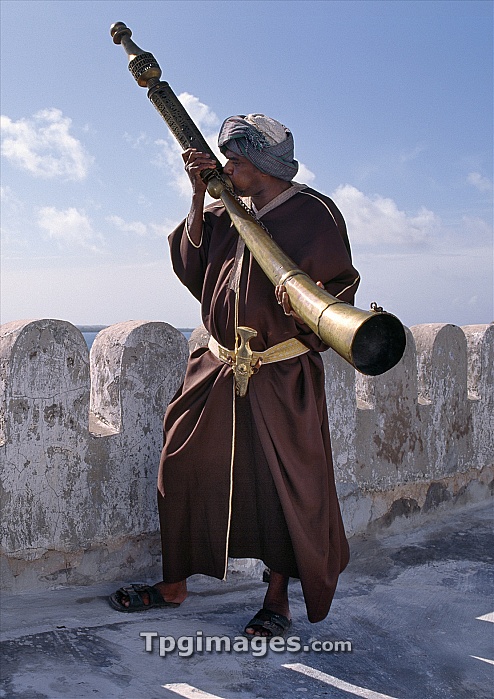
A Swahili man in traditional attire blows the Siwa on the battlements of the Lamu Museum. This unique and hugely heavy ritual horn was used before the 19th century in Pate and Lamu Islands to herald religious and festive occasions or to alert the community of danger. Cast in the lost-wax method in the early eighteenth century, this priceless artefact of Lamu's past is now housed in the Lamu Museum. Situated 150 miles north-northeast of Mombasa, Lamu town dates from the 15th century AD. The island's importance lies in the fact that it has the only certain source of sweet groundwater in the entire district. The town was declared a World Heritage Site by UNESCO in 2001 because it is the oldest and best preserved Swahili settlement in East Africa. Moreover, its architecture and urban development graphically demonstrates the diverse cultural influences that came together over many centuries to produce a distinctively local Swahili style and culture.
| px | px | dpi | = | cm | x | cm | = | MB |
Details
Creative#:
TOP06633512
Source:
達志影像
Authorization Type:
RM
Release Information:
須由TPG 完整授權
Model Release:
NO
Property Release:
NO
Right to Privacy:
No
Same folder images:

 Loading
Loading